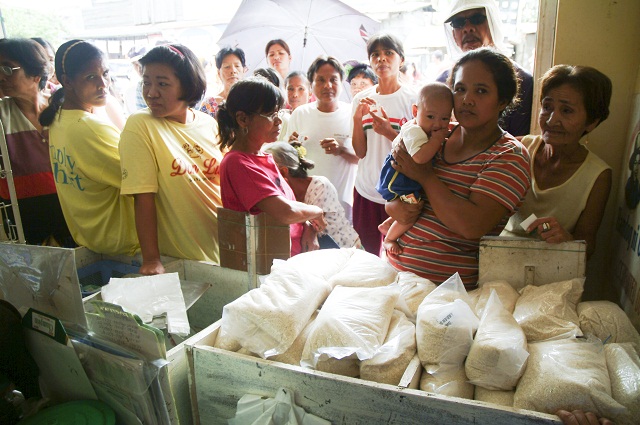The Philippine Rice Research Institute (PhilRice) sees no rice shortage in the country at least for the first quarter of 2018.
Dr. Bordey, an economist and the Deputy Executive Director for Research of PhilRice said the Philippines produced a total of 19.3 million tons of palay in 2017 which is equivalent to 12.5 million tons of rice – the country’s highest production in history. The country also had a carry-over stock of 2.7 million tons of rice at the start of 2017, and approximately 1 million tons of imported rice last year.
“This means that we have a total stock of 16.2 million tons of rice in 2017. If we examine our rice consumption, we only need 13.1 million tons including our food, rice seeds, raw materials for processing of value-added products, animal food, and even wastage. This is based on the assumption that about 105 million Filipinos individually consume approximately 110 kg of rice every year,” Bordey explained.
At the start of 2018, PhilRice estimates roughly 3 million tons of carry-over rice stocks, which is sufficient for 87 days. Furthermore, local farmers are expected to harvest 23% of the total production of the year during the first quarter of 2018, ensuring enough rice for every Filipino this quarter and even leftover stocks for the next.
Despite the availability of supply, Bordey emphasized the reason behind the potential need for rice importation.
“We have to understand that rice production in the country is seasonal. Our production peaks during the last quarter of the year, while our consumption barely changes over the months. Our stocks dwindle as we enter the lean months from July to September. Without comfortable level of stocks, there is a tendency for price of rice to spike. This is where importation can help. It can help us manage the supply and demand for rice, and avoid sudden, unexpected increase in its price. Following the trend over the years, the country produces 23% of its total rice production in the first quarter of the year, 21% in the second, 16% in the third, and 40% in the fourth,” Bordey said.
Dr. Bordey also cited the changes in the government policies regarding international rice trade. In the Philippines’ commitment to the World Trade Organization and ASEAN Free Trade Agreement, the government’s power to set quantitative restriction on rice imports must be replaced with tariff.
“This new trade regime allows the entry of cheap imported rice in the Philippines provided that the required tariff is paid. Unfortunately, even with 35% tariff rate, Philippine rice is still more expensive than the imported ones from our ASEAN neighbors such as Thailand and Vietnam,”
In a study of Bordey’s team, the landed cost of imported rice from Vietnam with 25% broken grains is only around P27/kg including the tariff. It is a lot cheaper than the rice produced here in the country, which are sold at around P40/kg at the retail. The big price difference and potential profit can attract merchants to bring-in more rice imports. The only way our local rice can compete is to lower its cost. We can only do that if we enhance the competitiveness of our farmers,” Bordey explained.
Dr. Bordey said this situation is the main reason PhilRice and the Department of Agriculture push rice security. Hence, experts recommended ways on how farmers can make our locally-produced rice competitive.
“The key strategy is for our farmers to increase their yield per hectare and decrease their cost in farm production. Planting hybrid and certified inbred seeds with appropriate crop management practices can help achieve high yield. Meanwhile mechanizing farm processes and using other labor-saving technologies can lower the production cost. High labor cost spells the difference in the farm production cost of Vietnam and the Philippines, hence the importance of lowering it,” Dr. Bordey further explained.
Aside from this, she added that increasing Filipino farmers’ knowhow on marketing their products, learning about agri-entrepreneurship, and strengthening farming organizations are also vital steps in ensuring the country’s competitiveness toward rice security.





